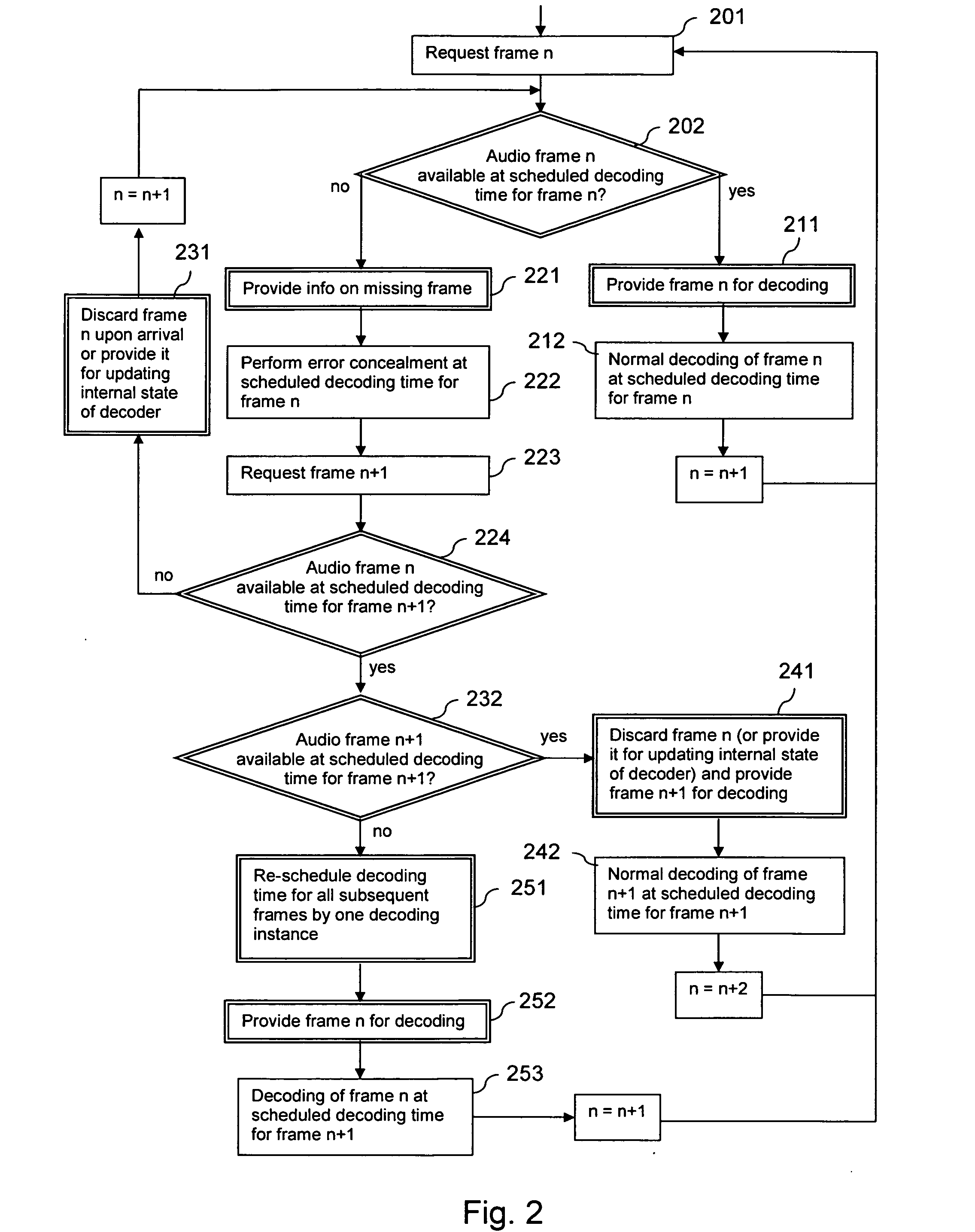Supporting a decoding of frames
a decoding and frame technology, applied in the field of support of frames, can solve the problems of reducing sound quality, packets and included audio frames are considered lost, and jitter in the network, and achieve the effect of reducing the negative effect on quality
- Summary
- Abstract
- Description
- Claims
- Application Information
AI Technical Summary
Benefits of technology
Problems solved by technology
Method used
Image
Examples
Embodiment Construction
[0038]FIG. 1 is a schematic block diagram of an exemplary system, which enables a handling of audio frames arriving too late for a normal decoding in accordance with an embodiment of the invention.
[0039]The system comprises an electronic device 110 with an audio transmitter 111, a packet switched communication network 120 and an electronic device 130 with an audio receiver 140. It is to be understood that the electronic device 110 may equally comprise a corresponding audio receiver 140 and that the electronic device 130 may equally comprise a corresponding audio transmitter 111. The packet switched communication network 120 can be or comprise for example the Internet, and it can be accessed by both electronic devices 110, 130.
[0040]The input of the audio receiver 140 of electronic device 130 is connected within the audio receiver 140 on the one hand to a jitter buffer component 141 and on the other hand to a network analyzer 145. The jitter buffer component 141 comprises in addition...
PUM
 Login to View More
Login to View More Abstract
Description
Claims
Application Information
 Login to View More
Login to View More - R&D
- Intellectual Property
- Life Sciences
- Materials
- Tech Scout
- Unparalleled Data Quality
- Higher Quality Content
- 60% Fewer Hallucinations
Browse by: Latest US Patents, China's latest patents, Technical Efficacy Thesaurus, Application Domain, Technology Topic, Popular Technical Reports.
© 2025 PatSnap. All rights reserved.Legal|Privacy policy|Modern Slavery Act Transparency Statement|Sitemap|About US| Contact US: help@patsnap.com



